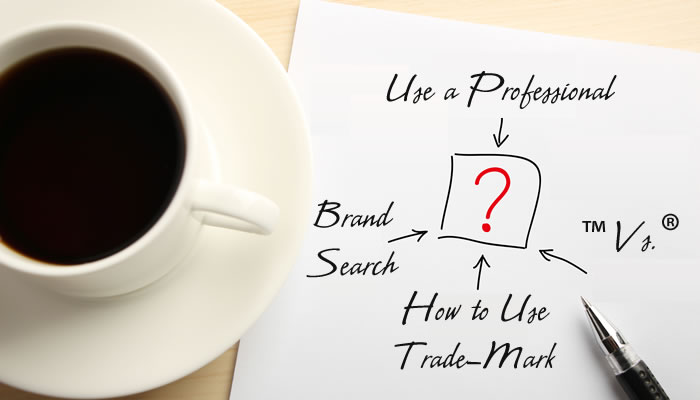In my previous article, I talked about the importance and benefits of choosing a creative brand.
This article covers the importance of doing a brand search, whether or not a trade-mark professional can assist you with the search, what’s involved in the registration process and identifying the differences between the ™ and ® symbols.
Should I Search My Brand Before I Use It?
Yes. Once a business brand is chosen, it should be searched. You can do some preliminary searching yourself. Begin by doing an Internet search looking for similar marks in similar or related fields.
Then move on to search the domain name registries and any relevant trade directories to ensure a similar mark does not exist.
Should I Use A Trade-Mark Professional?
While most trade-mark databases are accessible to the public and should be searched to locate any identical marks, a trade-mark professional should be contacted to do a full trade-mark and corporate name search in order to provide a complete analysis.
Conducting this type of analysis is highly specialized. There are many issues that must be considered in order to determine whether a trade-mark is available and registrable.
I often jokingly ask…You wouldn’t operate on yourself… right? So why would you file your own trade-mark application? The answers that I typically encounter are:
- “It’s easy”
- ”I can do it on-line”
- ”It’s cheaper to do it myself”
While filing a trade-mark application on-line may appear easy, it’s what happens after the mark is filed that can be problematic.
When the mark is examined, the Examiner will review the application to make sure it complies with the applicable sections of the Canadian Trade-Marks Act. If there are issues, the Examiner will write to you, make you aware of the deficiencies and require you correct them.
This is where it gets tricky. If you don’t know how to respond properly, you risk negatively impacting your trade-mark rights and possibly losing your mark.
At the end of the day, filing the mark yourself may end up costing you more money because you may have to hire a trade-mark professional to fix the application or possibly even re-file it because the mistake is not fixable.
If the application must be re-filed, you don’t get the government fees back and will have to pay new ones.
What’s The Difference Between The ™ And The ® Symbols?
There are no laws in Canada governing the use of the ™ symbol. Therefore, you can use this symbol regardless of whether you have an application for registration pending or not.
The ® symbol should only be used if the mark is registered.
How Do I Use These Symbols Properly?
When you use your trade-mark on packaging, labels, website and marketing materials, you should consider displaying the mark as follows:
If the mark is unregistered, use it as follow:
EXAMPLE: INFUSEWORKS™
Also, include the following statement in small print at the bottom of any printed materials, advertising and website:
INFUSEWORKS is a trade-mark owned by Infuse Works Inc.
If the mark is a registered mark, use it as follows:
EXAMPLE: INFUSEWORKS®
Also, include the following statement in small print at the bottom of any printed materials, advertising and website:
INFUSEWORKS is a registered trade-mark owned by Infuse Works Inc.







